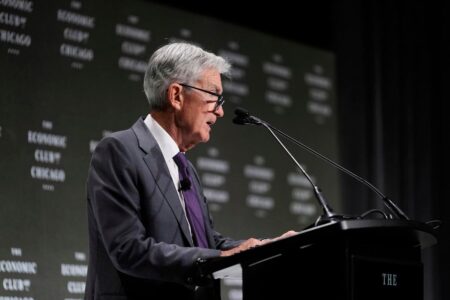Key News
Asian equities were mixed despite a stronger US dollar overnight, gold surging, and yesterday’s US equity downdraft, as Taiwan underperformed.
The Yen was resilient, giving some validation to today’s Financial Times article on Japanese institutions selling US Treasuries, though it is hard to say for sure. The US dollar’s decline, stock market decline, and asset flow out of the US were topics in Chinese media, though likely being repeated globally.
The positions of star active fund managers, revealing their positions, garnered attention on a light economic data and policy day. One manager’s top positions were revealed as Tencent, Alibaba, Kweichow Moutai, Meituan, Wuliangye, Yum China, and CNOOC. Another manager focused solely on Mainland China A shares revealed holdings in Sokon, Eve, Naura, and Trina Solar.
After the close, Central Huijin Investment Ltd, the financial arm of China’s sovereign wealth fund (SWF), updated its positions in four Mainland equity ETFs with increases of 363 million shares, 501 million shares, 117 million shares, and 157 million shares. The SWF’s positions are in the tens of billions, so the Q1 increases aren’t massive in my opinion. Coincidentally, Reuters published an article on retail investors and the National Team buying during market hours that garnered attention. There continues to be coverage of the government’s rare statements on stabilizing the stock market.
Hong Kong’s volumes were strong on a positive day. JD.com was down -6.32% and Meituan was down -4.62%, as they battle for restaurant delivery, which weighed on both stocks as investors fear margin compression. The outcome of these pyrrhic victories has been painful to watch, as firms undercut one another to garner market share, as profitability falls to the wayside. This reminds me of the battle between Uber and Didi.
Mainland investors bought a very large net $2.753 billion of Hong Kong stocks and ETFs via Southbound Stock Connect, as the Hong Kong Tracker ETF, the Hang Seng China Enterprise ETF, Tencent, and Alibaba were the largest beneficiaries of inflows. 50% of Hong Kong turnover was from Mainland investors via Southbound Stock Connect. Healthcare was the top-performing sector in Hong Kong, up +6.52%, and Mainland China, up +0.49%, on the belief that the sector will be resilient to the US-China trade war. Mainland technology and growth stocks, including electronic equipment, semiconductors, software, and electrical equipment, underperformed. A sell-side economist dropped their 2025 China GDP target to 4% from 4.5%. Hong Kong and Mainland China’s resilience has garnered shockingly little attention from global investors.
The CEOs of Walmart, Home Depot, and Target visited President Trump at the White House yesterday. While the companies’ statements called the meeting “productive” and “constructive,” the companies and their customers will unfortunately be adversely impacted by tariffs. Hopefully, the US and China can make some progress, as some have speculated that Nvidia’s Jensen Huang’s visit to Beijing could be his attempt to act as a bridge between the two sides. Fingers crossed!
Live Webinar
Join us on Wednesday, April 23, at 10 am EDT for:
Trump’s China Playbook: Amb. Terry Branstad on How the President Thinks
Please click here to register
New Content
Read our latest article:
New Drivers For China Healthcare: AI Med-Tech Innovation, Cancer Treatment, & Favorable Balance of Trade
Please click here to read
Last Night’s Performance
Last Night’s Exchange Rates, Prices, & Yields
- CNY per USD 7.31 versus 7.29 yesterday
- CNY per EUR 8.40 versus 8.41 yesterday
- Yield on 10-Year Government Bond 1.65% versus 1.66% yesterday
- Yield on 10-Year China Development Bank Bond 1.68% versus 1.70% yesterday
- Copper Price +0.65%
- Steel Price -0.19%
Read the full article here











